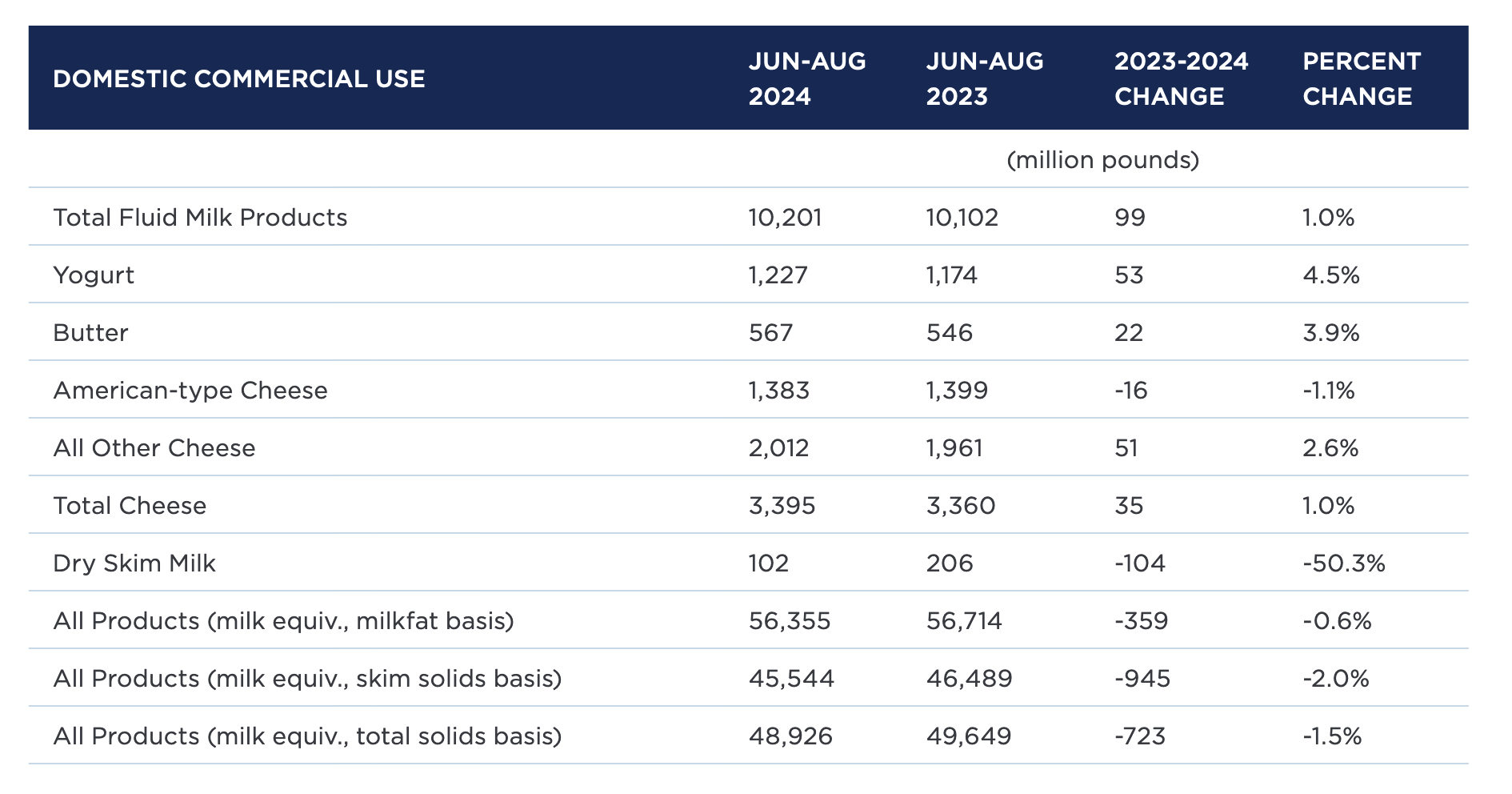See how slight increases Global Dairy Trade results and increasing Chinese imports affect farmers. How can they adjust to market changes and grab new chances?
Summary:
Global Dairy Trade auction results show a 1.4% increase, worrying farmers due to lower Skim Milk and Whole Milk Powder prices. Despite this, China increased its dairy imports by 30.6% in December, which might help boost global demand and support milk prices. While cheese prices are steady, future increases in cheddar production could lower prices. Managed money is betting on higher milk prices in Class III futures, indicating optimism and stable whey prices are helping farmers. However, the butter market is struggling, which could affect Class IV milk prices. Futures of nonfat dry milk (NFDM) suggest a tight supply, which could stabilize prices. Farmers must combine short-term actions with long-term planning to effectively handle these market shifts.
Key Takeaways:
- Recent GDT auction results showed a 1.4% increase, raising potential concerns over farm-gate milk prices.
- Chinese dairy imports surged by 30.6% in December, suggesting increased global demand, which may bolster milk prices.
- The cheese market remains stable within a neutral trading range, but future increases in cheddar production might pressure prices.
- Managed money’s increased long positions in Class III futures imply potential bullish trends for milk prices.
- Stable whey prices benefit farmers, yet the butter market’s challenges could affect Class IV milk prices.
- NFDM market dynamics indicate potential supply tightness that could support milk prices.
- Dairy farmers must stay informed on market trends, balancing short-term strategies with long-term production and demand changes to succeed.

Have you ever wondered how dairy farmers worldwide are coping with the shifting dynamics of the global dairy market? A 1.4% increase in Global Dairy Trade (GDT) auction results and a 30.6% increase in Chinese dairy imports in December show how unpredictable the market can be. Due to their substantial roles in the global dairy market, these changes have significant implications for key regions such as the U.S. and China. Farmers must strategize using short-term plans to manage risks while considering long-term market trends. They should proactively seek opportunities such as diversifying product offerings and exploring new markets as demand and prices change.
This slight increase was primarily attributed to significant price drops in Skim Milk Powder (SMP) and Whole Milk Powder (WMP), which plummeted by over 2% due to oversupply issues in the market. This drop could mean less money for dairy farmers who sell these products, as they would earn less from the same amount of milk powder. This is worrying because it could lower milk prices from the farm. Dairy farmers, who need steady prices, might face money problems if these price drops keep happening. Falling SMP and WMP prices could lower the value of milk sales, hurting profits. But there’s hope. In the U.S., Nonfat Dry Milk(NFDM) futures are priced higher than world rates. This could protect U.S. producers from specific global price decreases. The GDT auction results show worrying trends in milk powder prices. Still, the higher U.S. NFDM futures help give some protection to American dairy farmers facing global trade challenges.
| Product | Price Change (%) | Current Price (USD) |
|---|---|---|
| Whole Milk Powder (WMP) | -2.5% | $1,200 |
| Skim Milk Powder (SMP) | -2.1% | $1,210 |
| Butter | -1.8% | $4,450 |
| Cheddar | +0.5% | $3,500 |
| Nonfat Dry Milk (NFDM) | +1.2% | $1,135 |
Chinese Dairy Imports
China’s unexpected 30.6% surge in dairy imports in December could bring hope to the global dairy market. As one of the largest dairy buyers, China’s increased demand could help stabilize milk prices, offering a glimmer of optimism to dairy farmers who have been grappling with recent price drops at the Global Dairy Trade auctions. This surge in demand from China could lead to a more stable global market, which would benefit dairy farmers worldwide. However, it’s crucial to ascertain whether this is a one-time occurrence or the beginning of a sustained trend.
The world closely monitors China’s buying habits because the country substantially influences supply and demand, directly shaping global market dynamics. Prices could increase if China keeps buying more milk and other dairy products. Yet, if this surge is short-lived, an oversupply issue could lead to lower prices in the market.
It is imperative to closely monitor China’s production and consumption patterns, as they directly influence future imports and market trends, shaping the dynamics of the global dairy industry. Dairy farmers can proactively handle potential market changes by monitoring these trends and adjusting their plans accordingly. Given the significant impact of China’s dairy import patterns on global markets, a combination of short-term vigilance and long-term planning is essential for navigating these changes.
Analyzing the Cheese Market
The Class III and cheese futures market is currently stable, with Class III prices between $1.80 and $1.90 per hundredweight and cheese futures prices at $1.80 per pound. This stability assists dairy farmers in planning effectively. This results from avoiding excess cheese in the market, ensuring a balance between supply and demand. This steady supply is crucial because it keeps prices from dropping too low. Reasons for this balance include a drop in U.S. milk production—which hasn’t been this low since the 1960s—strong cheese exports like mozzarella and gouda, and milk being used more for drinks as schools reopen.
But, significant changes are coming in 2025 due to around $8 billion invested in new cheddar plants. This investment could boost cheese production by about 6% of the current annual production. Failing to align increased cheese production with a rise in consumer demand may result in an oversupply of cheese, leading to downward price pressure in the market. For instance, historical data shows that similar oversupply situations have caused a significant decline in dairy farmers’ profitability. Dairy farmers need to be ready for these changes in the market.
Class III Futures and Whey Market Dynamics
The increase in bets by investors on Class III futures, driven by factors such as favorable weather conditions and increased export demands, suggests a positive outlook for milk prices shortly. Some experts think milk prices might go up soon, and if they are correct, dairy farmers could earn more money. This increase in bets on Class III futures indicates a potential increase in milk prices, which would benefit dairy farmers as they would receive more revenue for the same quantity of milk. However, the market must turn out as experts predict.
At the same time, whey prices have stayed steady in the low to mid-70s due to strong demand for protein. This is advantageous for dairy farmers, as whey prices directly influence milk prices and serve as a crucial indicator of the broader dairy market dynamics, shaping producers’ revenue and market stability. Still, future demand isn’t apparent, with less trading in longer-term contracts. Farmers should watch these changes, looking for short-term wins while being ready for possible changes in what the market wants.
Butter Market
The butter market faces challenges, including a recent price drop and increased selling activity, indicating potential instability in butter prices. These changes can affect Class IV milk prices since they rely significantly on butter prices. Last week, spot butter prices fell by 8.25 cents, leading to more people selling futures. This shows that people are losing confidence in butter prices, which could push Class IV milk prices down, hurting dairy farmers’ earnings.
Dairy farmers specializing in butterfat production must closely monitor these changes to adapt their strategies and mitigate potential financial risks. Because the market is unstable, these farmers might need to rethink their financial plans and risk strategies to avoid losing money. Staying abreast of market trends is essential for making informed decisions and maintaining financial stability amidst the challenges in the current market environment.
NFDM Market Dynamics
The NFDM market currently has spot prices higher than future prices, indicating a potential shortage in supply to meet the current demand. Raising milk prices could benefit dairy farmers but also requires careful planning.
The shortage of NFDM supply, reflected in elevated spot prices, creates opportunities and challenges for farmers. Farmers must also plan for future uncertainties, which might lead to immediate profits. Dairy farmers can protect their businesses and increase profits by making the most of the current market and preparing for price changes.
Navigating the Complex Dairy Market
The recent 1.4% increase in the Global Dairy Trade auction is concerning as it indicates declining prices for Skim Milk Powder and Whole Milk Powder. If this trend continues, it could hurt farmers’ earnings from selling milk. In addition, the butter market is also facing trouble, with dropping prices possibly affecting Class IV milk values.
But there is also some good news. Chinese dairy imports shot up by 30.6% in December. As China is one of the largest dairy buyers, this increase could help keep global milk prices steady. Also, more people are betting on an increase in Class III futures, which suggests milk prices could rise.
Dairy farmers must remain vigilant and adaptable in continuously managing their risks. They should closely monitor short-term changes, such as the price of butter and milk powder, and long-term trends, such as changes in production and demand worldwide. By adopting innovative strategies such as diversifying product offerings and exploring new markets, farmers can seize immediate opportunities and shield themselves from future market challenges.
The Bottom Line
As changes continue in the dairy market, farmers need to stay alert. The recent slight increase at the Global Dairy Trade auction showed drops in Skim Milk Powder and Whole Milk Powder prices, highlighting the need for thoughtful planning. However, with a rise in Chinese dairy imports and positive signs in Class III futures, there are still chances to profit. It’s essential to watch new cheese factories, Chinese demand, and trends in protein and butter markets. Farmers can deal with uncertainties and use insights to balance short-term plans with long-term growth by staying well-informed and flexible. The message is clear: farmers should remain proactive and take opportunities in a changing global dairy market.
Learn more:
- Global Dairy Trade: Key Insights Every Dairy Farmer Should Know
- Why Milk Costs More but Dairy Farmers Earn Less: The Global Dairy Dilemma
- American Dairy Farmers Grapple with Trade War and Immigration Policies: The Fight to Stay Afloat
 Join the Revolution!
Join the Revolution!
Bullvine Daily is your essential e-zine for staying ahead in the dairy industry. With over 30,000 subscribers, we bring you the week’s top news, helping you manage tasks efficiently. Stay informed about milk production, tech adoption, and more, so you can concentrate on your dairy operations.







 Join the Revolution!
Join the Revolution!












